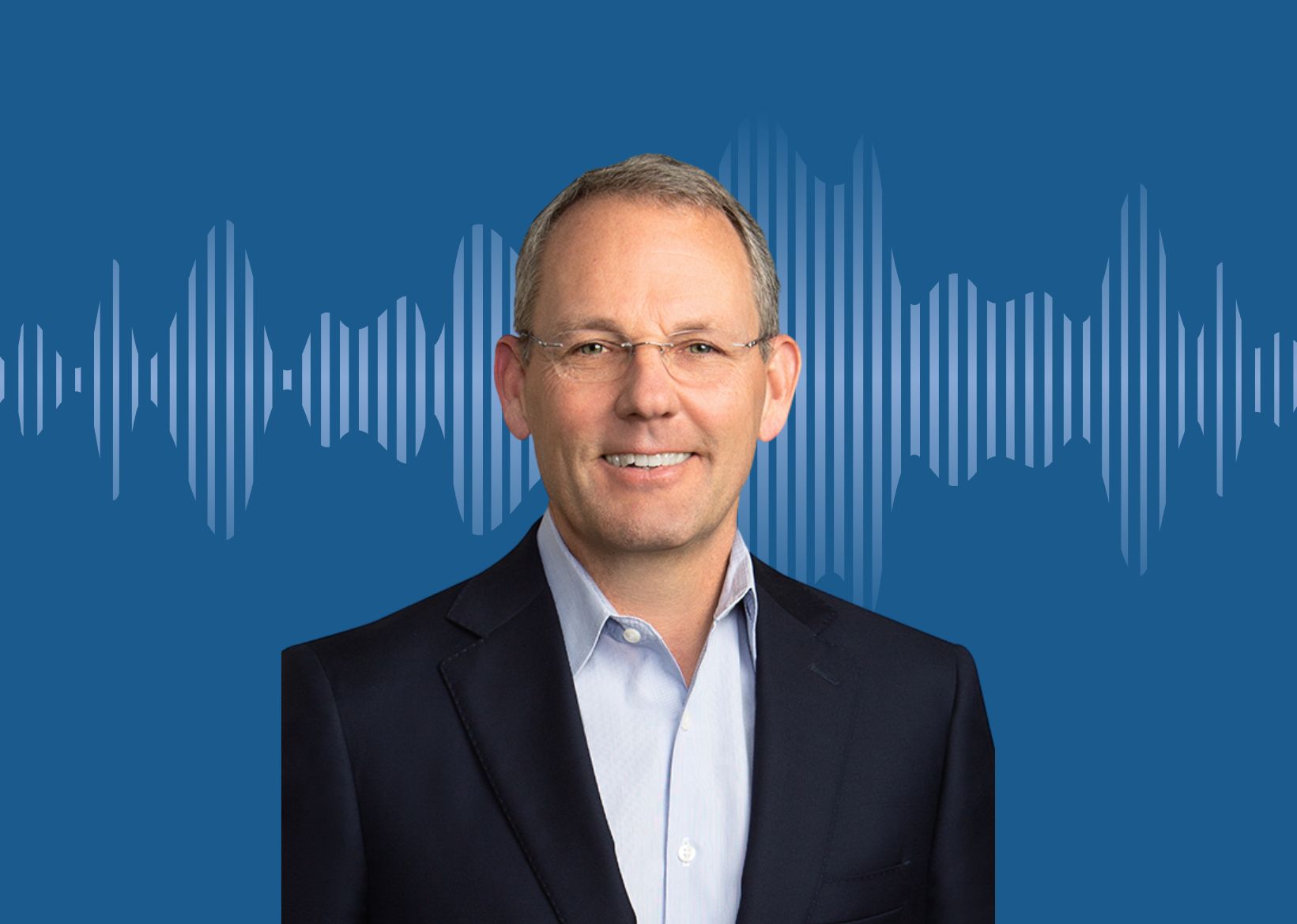Chris Wallis, CEO and CIO at Vaughan Nelson, reviews the Fed’s 50bps cut, expectations around future rate cuts, and the effect on growth and inflation.
September 19th, 2024
Also find us on
Lightly edited transcript
Dan: Welcome to the Vaughan Nelson podcast. With me today is CEO and CIO, Chris Wallace. Welcome Chris.
Chris Wallis: It’s great to be here, Dan.
Dan: Okay, Chris, good to have you. Some big news yesterday. Fed met and they decided we’re going to cut interest rates. But on the cut, they saw the cut to go to 50 basis points. Question, are you surprised they went with 50 basis points and not a 25 basis points cut? And then really rolling that question is, does that mean that the economy is weaker than everyone seems to think?
Chris Wallis: Yeah. Look, I know people want to be the position, the 50 basis point cut is a political move, or wow, the economy must be much weaker. You can read into it whatever you want. The simple truth is we’ve been looking and have been saying for the last six to nine months, the Fed needs to cut rates. And they, quite frankly in my mind, they should have cut 150 or 200. And I think the reason they need to do that is inflation is much lower. It doesn’t mean we’ve solved the riddle of inflation, but it does mean that there’s been a sufficient decline that sitting at five and a quarter, the rate’s just too high. And at the same time, the bond market’s screaming at you that that’s the case. So they’re going to end up where the two-year bond is. And today that’s probably around 360. How fast they get there, is kind of up to them. But I think that’s where we’re headed, and that’s a good thing. And so we need to re-steepen the yield curve. That definitely improves the health of the banking system, it makes it easier to fund deficits. And as we’ve all always stated, we’re in a period of fiscal dominance, so we need to be able to continue to fund these deficits. So now I’m not surprised they went 50. Could it be political? Yeah, why not? But at the end of the day, we’ve already teed it up going into the election, there’s going to be a lot of liquidity coming into the market. But I think they should have gone 100. Like I said, I think they’re fairly far out of step, and that’s basically in the Q&A with Powell. And to some degree, I’ll take him at his word, that they needed to move big. Because he’s looking at the US two-year and going, “Wow, I’ve got a long way to go, I need to get started.”
Dan: Yeah, and talking about getting started, what do you think the trajectory looks like? Do you think they’ll be a bit more gradual from here? And then I think I caught you say we’re looking at a kind of mid-threes.
Chris Wallis: Yeah.
Dan: So we’ve got a ways to go, if that’s what you believe.
Chris Wallis: Yeah, look, I do think they’re going to be pretty aggressive with the rate cuts. And again, I think they need to get to where the US two-year is. So it wouldn’t surprise me to see them go 50 or 75, and try to front-end load them. People shouldn’t read into it that there’s weakness in the US. When you look at the underlying data, and as a reminder, we got pretty good visibility out for the next six to nine months, as far as the growth trajectory. The US is going to slow, and services is going to slow, and construction activity is going to slow somewhat. Manufacturing is going to remain soft, but it is not falling off a cliff by any stretch of the imagination. But you do need to cut rates. And it’s going to be a healing process. I would love to see us get short rates to the point that we could spur housing turnover. That would have a huge positive impact on economic activity. Quite frankly, just people’s general quality of life and hope for the future. And ironically, it would probably bring down housing prices. Not only because it would increase supply on the market, but a big component of home prices is what price point of homes are being sold. And right now, as you can imagine, it’s the higher end that’s moving. So that may be distorting the data somewhat. So I hope they’re aggressive, I wouldn’t have too much concern with it. And they need to be. The other reason they need to be, is they need the air cover to be aggressive with rate cuts. We’ve talked about in the past, we’re going to go through this soft patch for the inflation prints, and then they’re going to start firming in the fourth quarter and first quarter of ’25. And if all of our forward indicators are correct, you’re going to get a soft September, soft October print. That’s their window to cut, and I think they’re doing a good job of taking advantage of it. So, get us down to 4%. We can deal with the rest gradually after that. But you need to acknowledge, when you get into ’25, we may see inflation picking back up and moving back up to 3%. So make the cuts now.
Dan: Right. And so do you think that the pace of rate cuts that you’re talking about, would that change your view of inflation and growth?
Chris Wallis: Not yet. The only reason you could see a change, is I do think there has been a currency agreement made to weaken the dollar. And that will allow China to increase liquidity to their economy without too many negative side effects. Ultimately, that may increase inflationary pressures or spur more economic activity, and therefore we’d increase our growth estimates and increase our inflation estimates for the second half of ’25. But right now, that’s not happening, but we are definitely planting the seeds for that to be a possibility. Near term, look, the setup’s pretty simple for US investors. A lot of liquidity going into the election, fairly weak fourth quarter earnings, continued softness on the industrial side of the economy. The consumption is going to be soft but not rolling over significantly. And really, investors, once you go into the election, you really need to start thinking about how you want to be positioned for really Q2 of ’25.
Dan: All right, Chris, that’s good. Good one today. Thanks, good to have you on here. In probably be a couple of weeks, I know we’ve got some travel coming up between the two of us, so we’ll get you back here sooner.
Chris Wallis: Sounds good.
Dan: The views, information, and, or opinions expressed during this podcast are solely those of the individuals involved and do not necessarily represent those of Vaughan Nelson and its employees. Vaughan Nelson does not verify and assumes no responsibility for the accuracy of any of the information contained in the podcast. The primary purpose of the information, opinions, and thoughts presented in this podcast is to educate and inform.
This podcast or any podcast in the series does not constitute professional investment advice or services and any reliance on the information provided is done at your own risk. Past performance is not an indication of future performance. By accessing this podcast, you acknowledge that the entire contents of this podcast are the property of Vaughan Nelson, or used by Vaughan Nelson with permission and are protected under US copyright and trademark laws. Securities discussed within this podcast may be held in the Vaughan Nelson strategies.
This publication (the material) has been prepared and distributed by Natixis Investment Managers Australia Pty Limited AFSL 246830 for the Vaughan Nelson Global Equity SMID Fund (the “Fund”) and may include information provided by third parties. The information in this report is provided for general information purposes only and does not take into account the investment objectives, financial situation or needs of any person. Investors Mutual Limited AFSL 229988 is the responsible entity of the unquoted and quoted class units of the Fund. Vaughan Nelson Investment Management, L.P. is the investment manager. This information should not be relied upon in determining whether to invest or continue to invest in the Fund and is not a recommendation to buy, sell or hold any financial product, security or other instrument. In deciding whether to acquire or continue to hold an investment in the Fund, an investor should consider the current PDS and Target Market Determination for the appropriate class of the Fund, available on the website www.VaughanNelson.com.au or by contacting us on 1300 219 207. Past performance is not a reliable indicator of future performance. There is no guarantee of the performance of the Fund or any particular rate of return. The material may not be reproduced, distributed or published, in whole or in part, without the prior written consent of Natixis Investment Managers Australia Pty Limited and IML.
Stay up to date
with Vaughan Nelson
Register to receive regular performance updates and regular insights from the Vaughan Nelson investment team, featured in the Natixis Investment Managers Expert Collective newsletter.
Vaughan Nelson Investment Management marketing in Australia is distributed by Natixis Investment Managers, a related entity. Your subscriber details are being collected on behalf of Vaughan Nelson Investment Management, and Investors Mutual Limited (the RE for Fund) by Natixis Investment Managers Australia. Please refer to our Privacy Policy. Natixis Investment Managers Australia Pty Limited (ABN 60 088 786 289) (AFSL No. 246830) is authorised to provide financial services to wholesale clients and to provide only general financial product advice to retail clients.




